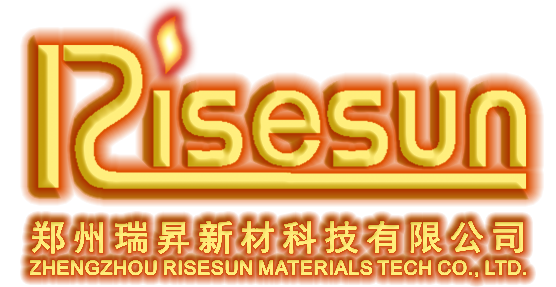06
2025
-
01
How Silicon Carbide Heating Elements Enhance Electrical Efficiency
How Silicon Carbide Heating Elements Enhance Electrical Efficiency Table of Contents 1. Introduction to Silicon Carbide Heating Elements 2. What is Silicon Carbide? 3. Advantages of Silicon Carbide in Heating Applications 4. Key Applications of Silicon Carbide Heating Elements 5. How Silicon Carbide Heating Elements Enhance Electrical Efficiency 6. Comparison with Conventi
How Silicon Carbide Heating Elements Enhance Electrical Efficiency
Table of Contents
- 1. Introduction to Silicon Carbide Heating Elements
- 2. What is Silicon Carbide?
- 3. Advantages of Silicon Carbide in Heating Applications
- 4. Key Applications of Silicon Carbide Heating Elements
- 5. How Silicon Carbide Heating Elements Enhance Electrical Efficiency
- 6. Comparison with Conventional Heating Materials
- 7. Future Trends in Silicon Carbide Heating Technology
- 8. FAQs About Silicon Carbide Heating Elements
- 9. Conclusion
1. Introduction to Silicon Carbide Heating Elements
Silicon Carbide (SiC) heating elements represent a groundbreaking advancement in the field of electrical heating technology. Their unique composition and properties allow for significant improvements in energy efficiency, temperature control, and overall performance compared to traditional heating elements. As industries worldwide strive for greater energy efficiency and sustainability, SiC heating elements emerge as a vital solution.
2. What is Silicon Carbide?
Silicon Carbide is a compound made up of silicon and carbon atoms. Known for its exceptional hardness and thermal stability, SiC is utilized in various applications, particularly in situations requiring high-temperature and high-voltage scenarios. Its unique crystalline structure provides excellent thermal conductivity, making it an ideal material for heating elements.
2.1 Properties of Silicon Carbide
The key properties of Silicon Carbide include:
- **High Thermal Conductivity**: SiC can efficiently transfer heat, allowing for rapid heating and improved performance.
- **High-Temperature Resistance**: Capable of operating at extremely high temperatures, SiC heating elements can withstand conditions up to 1,600°C (2,912°F).
- **Electrical Efficiency**: SiC offers superior electrical properties, leading to reduced energy consumption and enhanced performance.
3. Advantages of Silicon Carbide in Heating Applications
Utilizing Silicon Carbide heating elements provides numerous advantages, particularly in terms of efficiency and longevity.
3.1 Enhanced Energy Efficiency
One of the most significant benefits of SiC heating elements is their ability to operate with greater energy efficiency. The superior thermal conductivity of SiC ensures that more energy is converted into heat, minimizing energy wastage.
3.2 Increased Lifespan
Silicon Carbide heating elements exhibit a longer lifespan than traditional materials. Their resistance to oxidation and thermal shock reduces the likelihood of failure, resulting in lower replacement costs and downtime.
3.3 Reduced Maintenance Costs
With a longer operational lifespan and greater reliability, SiC heating elements require less frequent maintenance and replacement. This not only saves money but also reduces the environmental impact associated with manufacturing and disposal.
4. Key Applications of Silicon Carbide Heating Elements
Silicon Carbide heating elements are increasingly employed across various industries due to their versatility and efficiency.
4.1 Industrial Heating Systems
In industrial applications, SiC heating elements are used in furnaces, ovens, and kilns for processes such as metal hardening, ceramic sintering, and glass manufacturing. Their ability to reach and maintain high temperatures makes them ideal for these demanding tasks.
4.2 Semiconductor Manufacturing
The semiconductor industry relies on precise thermal management, and SiC heating elements are essential for processes such as wafer fabrication and doping. Their efficiency and reliability contribute to improved product quality.
4.3 Laboratory Equipment
In scientific research and laboratory settings, SiC heating elements are used in various analytical instruments and reactors where temperature control is crucial. Their rapid heating capabilities enhance the overall efficiency of experiments.
5. How Silicon Carbide Heating Elements Enhance Electrical Efficiency
Silicon Carbide heating elements enhance electrical efficiency in multiple ways, contributing to energy savings and improved process performance.
5.1 Rapid Heating and Cooling
SiC heating elements can achieve rapid temperature changes, allowing processes to start and stop quickly. This leads to reduced energy consumption, as less time is spent reaching desired temperatures.
5.2 Improved Temperature Uniformity
The high thermal conductivity of SiC ensures even heat distribution, preventing hot and cold spots in the heating area. This uniformity enhances product quality and reduces energy waste.
5.3 Enhanced Control Systems
Silicon Carbide’s electrical properties enable more sophisticated control systems, allowing for precise temperature regulation. This not only optimizes energy consumption but also improves process outcomes.
6. Comparison with Conventional Heating Materials
When comparing Silicon Carbide heating elements with traditional materials, several key differences emerge.
6.1 Efficiency
Traditional materials, such as nickel-chromium alloys, often operate at lower efficiencies and can waste a significant amount of energy. In contrast, SiC heating elements convert a higher percentage of electrical energy into heat.
6.2 Temperature Range
Conventional heating elements may struggle at high temperatures, whereas SiC elements maintain performance and stability even in extreme conditions.
6.3 Lifespan
Traditional heating elements typically have shorter lifespans due to oxidation and thermal fatigue. SiC elements, with their robust construction, can last significantly longer, reducing replacement and maintenance needs.
7. Future Trends in Silicon Carbide Heating Technology
As technology continues to advance, the future of Silicon Carbide heating elements looks promising.
7.1 Integration with Renewable Energy Sources
The push for sustainability is driving the integration of SiC heating elements with renewable energy sources, such as solar and wind power. Their efficiency complements renewable energy systems, making them more viable.
7.2 Smart Heating Solutions
The development of smart technology in heating systems is on the rise. SiC heating elements can be equipped with IoT capabilities, allowing for better monitoring and control, further optimizing energy use.
7.3 Expansion into New Industries
As industries seek more efficient heating solutions, the adoption of Silicon Carbide heating elements is likely to expand into sectors such as automotive, aerospace, and food processing.
8. FAQs About Silicon Carbide Heating Elements
8.1 What are the primary benefits of Silicon Carbide heating elements?
Silicon Carbide heating elements offer enhanced energy efficiency, a longer lifespan, and reduced maintenance costs compared to traditional materials.
8.2 In what industries are Silicon Carbide heating elements used?
SiC heating elements are utilized in industrial heating systems, semiconductor manufacturing, laboratory equipment, and more.
8.3 How do Silicon Carbide heating elements contribute to energy savings?
Their high thermal conductivity allows for rapid heating, improved temperature uniformity, and advanced control systems, all contributing to significant energy savings.
8.4 Are Silicon Carbide heating elements more expensive than traditional options?
While the initial investment may be higher, the long-term savings from reduced energy consumption and maintenance make SiC heating elements more cost-effective.
8.5 Can Silicon Carbide heating elements operate at high temperatures?
Yes, SiC heating elements are capable of operating at temperatures exceeding 1,600°C (2,912°F) without compromising performance.
9. Conclusion
Silicon Carbide heating elements represent a revolutionary advancement in electrical heating efficiency. With their superior thermal properties, longevity, and energy efficiency, SiC heating elements are poised to become the standard in various industries. As we move toward a more energy-conscious future, the role of Silicon Carbide will undoubtedly expand, offering innovative solutions to improve performance and reduce environmental impact. Embracing this technology not only enhances operational efficiency but also aligns with global sustainability goals, making it a smart choice for modern heating applications.



